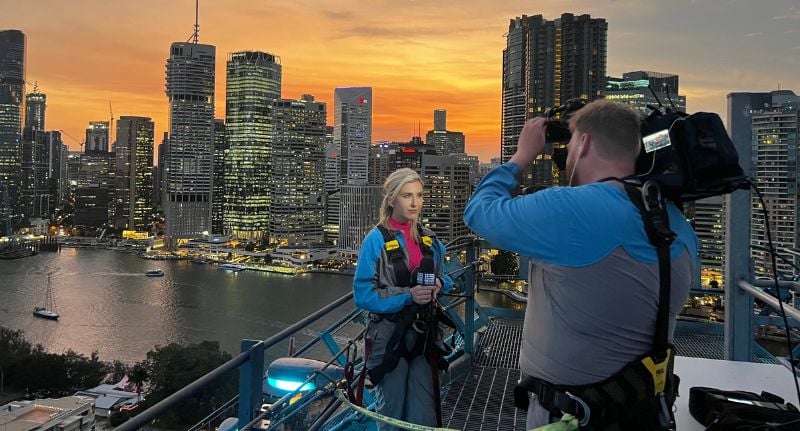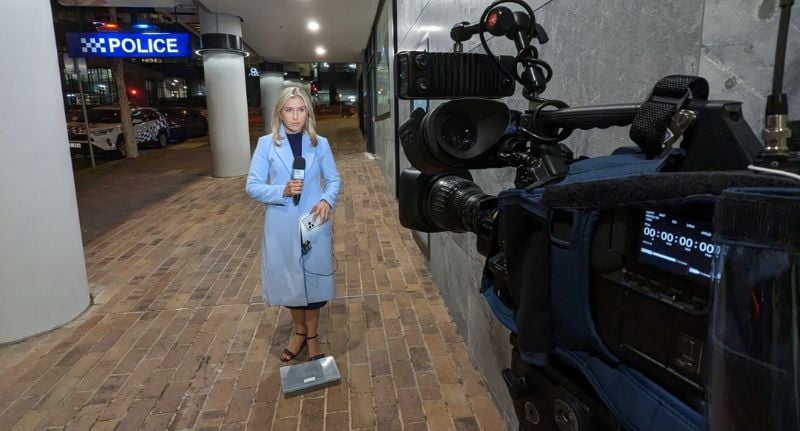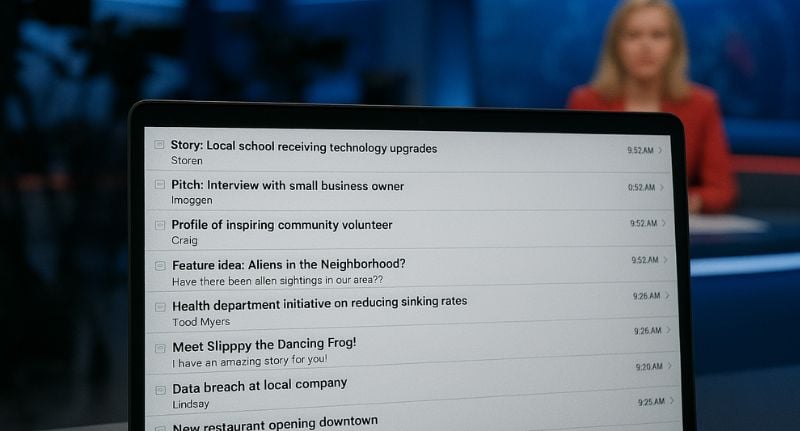Long before she was covering Queensland’s breaking news stories, Clare Todhunter was always keeping up with the latest news and current affairs.
“I grew up watching that bulletin 9News Gold Coast every night of the week. For many years, it was the only local commercial news option on the Gold Coast,” Todhunter told Mediaweek.
“Then of course, the statewide 6pm bulletin would follow, and we’d watch that too. It was our daily ritual.”
“When I was about 14 I had what I call my ‘light bulb moment’. I was watching a 9News reporter’s live cross and Mum said to me, ‘You could do that’, and I thought to myself, ‘Yeah, I could do that!’ That moment really set the path for me.”

From viewer to journalist
With a lifelong passion for writing and public speaking, journalism made perfect sense.
During her studies, Todhunter entered the world of radio, where she fell in love with the medium’s immediacy and energy. She spent nearly a decade in the medium, including a few years in Melbourne as the breakfast newsreader for 101.1 KIIS FM.
She also worked as an on-the-road breaking news reporter for Sydney’s GOLD 101.7 and the wider Australian Radio Network, based in NSW Parliament’s Press Gallery and gaining firsthand experience in the field. However, a desire for new challenges led her to television.
“I got to a point where I felt I had nothing left to achieve in radio. I was really proud to have an ACRA (Australian Commercial Radio Award) under my belt, I’d had the enormous privilege of being part of a breakfast show, I’d covered some of the country’s biggest news stories as a reporter.
I craved a challenge and wanted to try something new. That’s when I switched to TV, five years ago and I think within the first week, I thought, ‘what the hell have I done?'” she laughs.
A day in the life of a TV reporter
Now part of the 9News Queensland newsroom on Brisbane’s Mt Coot-Tha, Todhunter’s daily routine is fast-paced and ever-changing.
“It really depends on what’s happening. Some days I’ll be working on a story I’ve pitched myself. Some days, I’ll be assigned a story and I’ll need to decide early in the day how I want to tell that story,” she explains.
That means thinking fast: What’s the human angle? Who should she interview? What will the footage look like? And all while condensing the narrative into a 70-90 seconds.
“Then I’ll get on the phone to line up talent, get assigned a cameraman, and we’ll head out on the road. We’ll shoot our interviews, a piece to camera, and often a look-live (a pre-recorded piece to the camera with a similar delivery to a live cross) or do a live cross for the 4pm bulletin,” she says.
“If I’m working on a package, I’ll usually aim to be back in the newsroom by three o’clock at the latest, so I can start piecing my script together for the 6pm bulletin. I pick the bits that I feel best tell the story and decide which order I want them in.”
“Some days I wish I could write a short documentary with everything I’ve learned about a topic and the people I’ve met in a day.”
It’s a full-day operation, but for Todhunter, the thrill is in the variety: “That’s what I really love about covering general news is every day is different, and I get to do all kinds of different stories. I still feel challenged every day, and it can be really rewarding.”

Pitch perfect
With a constant influx of pitches, Todhunter is clear-eyed about what makes a good pitch, and what sends one straight to the trash.
“The ones that really catch my attention will start with a good vision opportunity. Exclusivity also goes a long way.”
She emphasises the importance of strong visuals, stating, “I mean the obvious thing is the pictures, they are make or break. That’s probably something I didn’t fully understand when I first made the switch to TV.”
Unlike radio, television demands compelling footage.
“It sounds obvious, but you’d be shocked at just how many pitches I get that haven’t considered footage,” she said.
Todhunter stresses the need for clear communication about visual opportunities. “I need to know what the picture or vision opportunity is.”
As for Todhunter’s other top tips?
Personalise the pitch: “I get a lot of emails, I probably won’t read past the first line if one isn’t addressed to me at all or my name is spelled wrong.”
Include a news angle: “Tell me why we should be covering the story.”
Know the audience: “It’s vital to know who you want to target with your pitch and whether or not our bulletins are the best vehicle to do that”.
